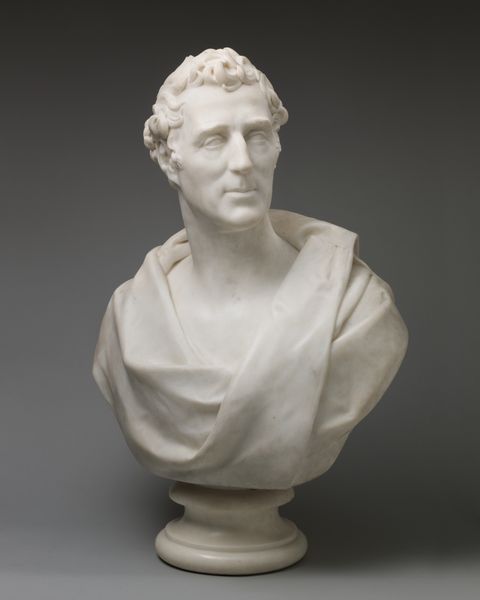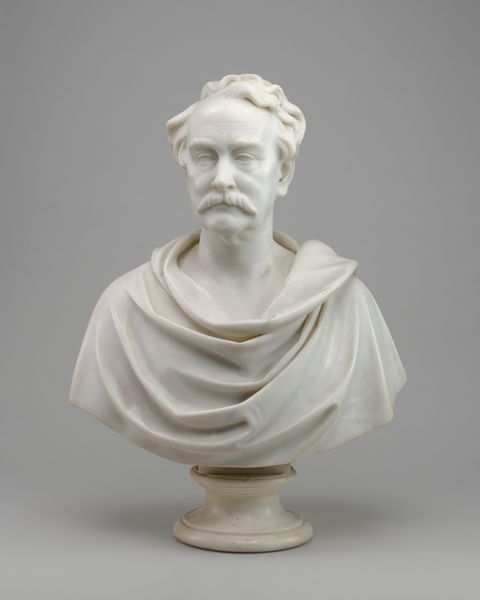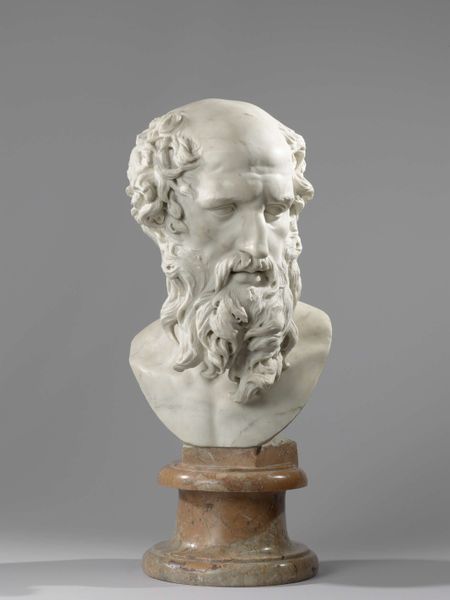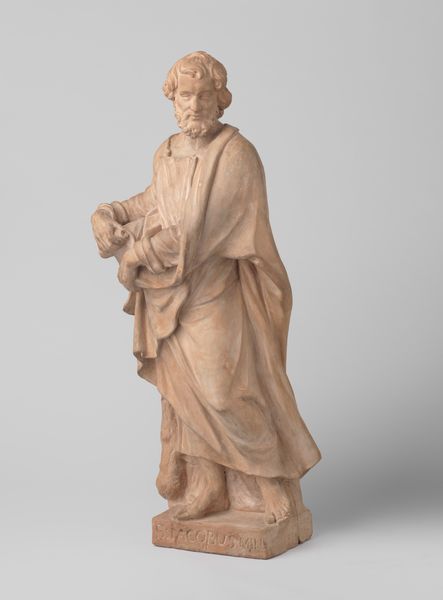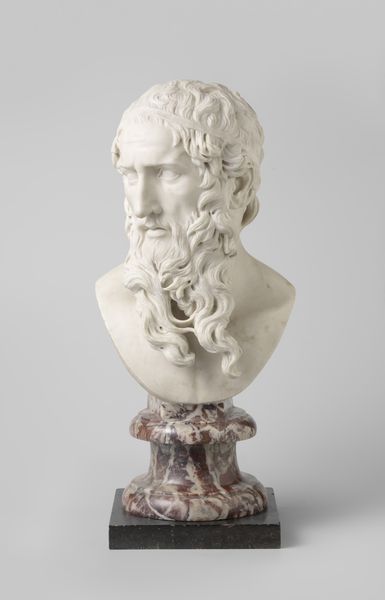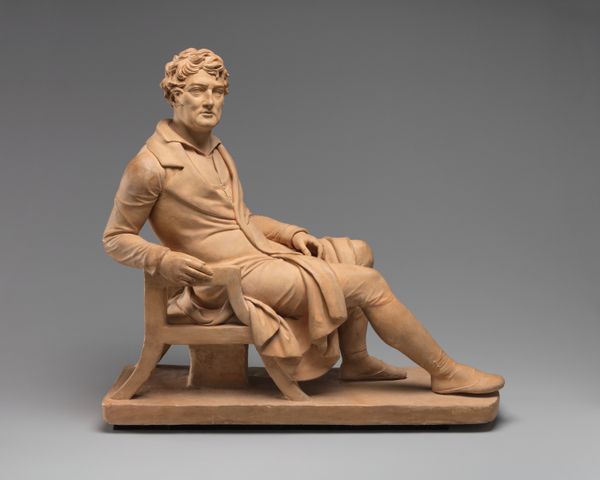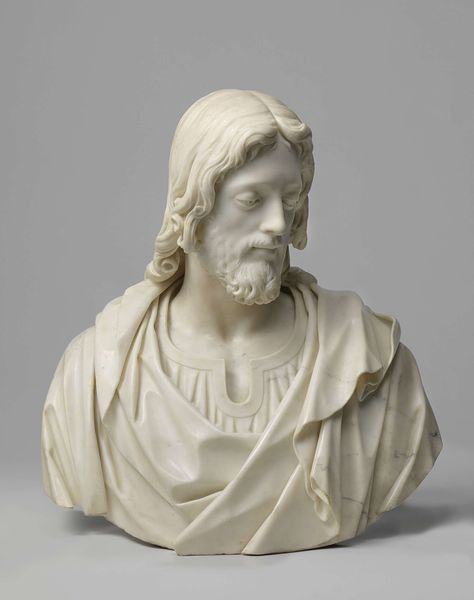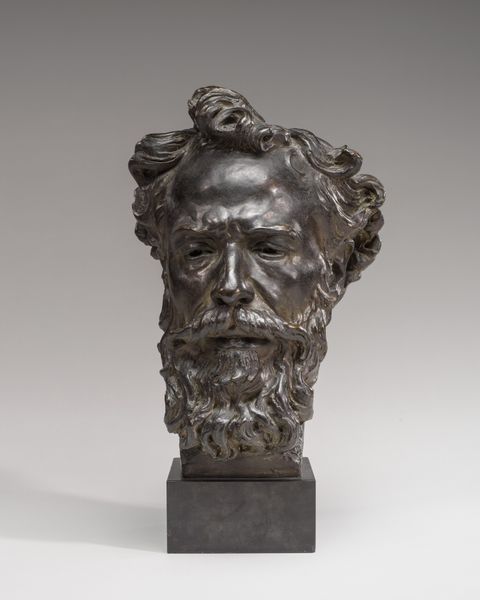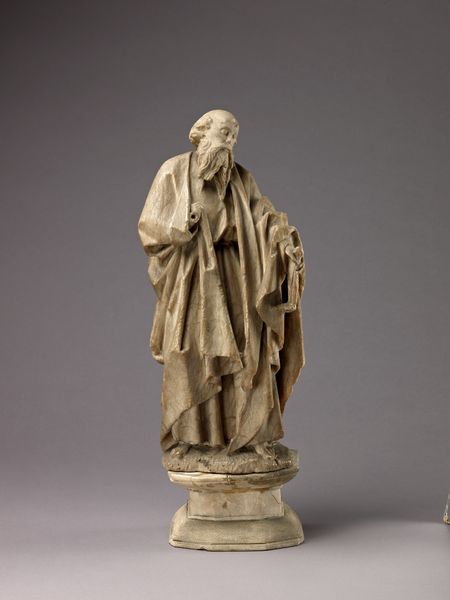
sculpture, terracotta
#
portrait
#
baroque
#
sculpture
#
sculpture
#
terracotta
Dimensions: overall: 38 x 32.4 x 19.8 cm (14 15/16 x 12 3/4 x 7 13/16 in.)
Copyright: National Gallery of Art: CC0 1.0
Curator: Before us stands Alessandro Algardi's "Saint Matthew," sculpted around 1640. Note the immediacy and emotional presence despite being terracotta. Editor: It's beautiful! There's something about the material, that rough-hewn clay, that lends it an earthiness, despite its religious subject. The drape of the cloth, so meticulously crafted, seems almost tactile. Curator: Algardi, working in Baroque Rome, faced the task of portraying the sacred in a way that would resonate with the faithful. We need to see how this connects to Counter-Reformation ideologies. Editor: True, and the fact it’s terracotta is key. Far from the gleaming marble typically associated with high-status commissions, the terracotta medium speaks volumes about accessibility. How it democratizes representation. Did this particular commission influence its material make up? Curator: It probably did. Algardi sought to embody a sort of 'humanistic' portrayal. The slight furrow of the brow, the gentle curve of the lips. It's more personal, more engaging than some depictions of saints from earlier eras. Editor: I wonder about the labour. The texture, especially on the drapery and hair suggests the direct impress of fingers working with damp earth and cloth, the manipulation of earthly substance that is ultimately intended for an unearthly subject. Was there a community that participated in its manufacture? Curator: While individual authorship has traditionally been emphasised when speaking about baroque Rome, acknowledging workshop assistance is vital. His artistic language was influential across the socioeconomic spectrum, embodying the material practices of everyday individuals to further political motivations of institutions like the Catholic church. Editor: So, a dialectical tension expressed in both its process of production and ideological intent. Interesting...it reframes the usual connotations around religious sculpture from this period, don't you think? Curator: Precisely! The artist wanted to portray a person, and in so doing, grapple with issues of the Catholic reformation on both a personal and societal scale. Editor: Looking closer now, the rough texture combined with an immaculate finish creates such compelling, contradictory qualities. There is nothing static about this, in a visual sense. I appreciate this. Curator: A wonderful thing about encountering pieces like this is to feel how relevant these figures remain across vast spans of time, connecting back to ourselves in some way. Editor: Absolutely! A humbling testament to both material practices and artistic vision of Baroque Rome.
Comments
No comments
Be the first to comment and join the conversation on the ultimate creative platform.

